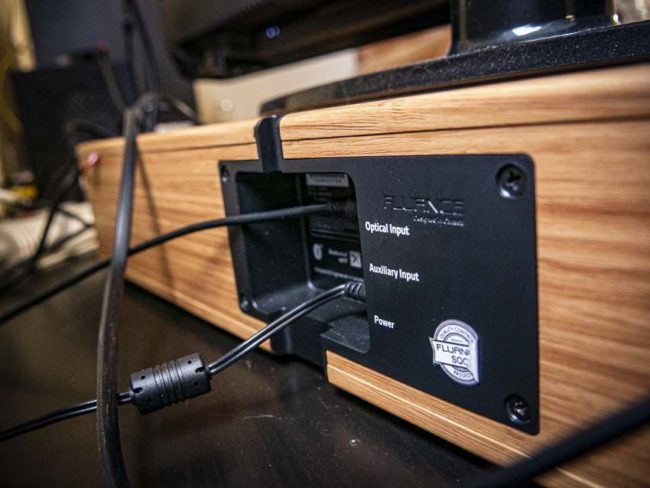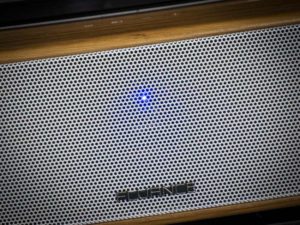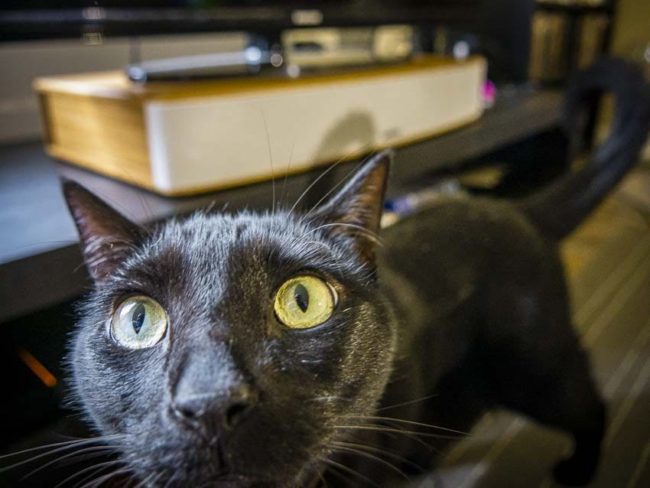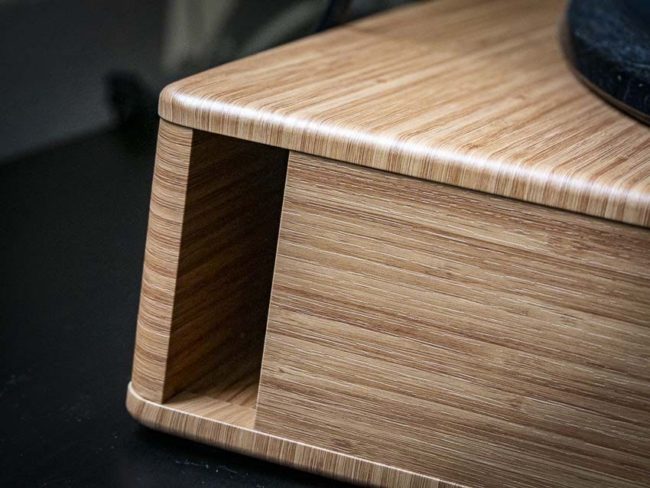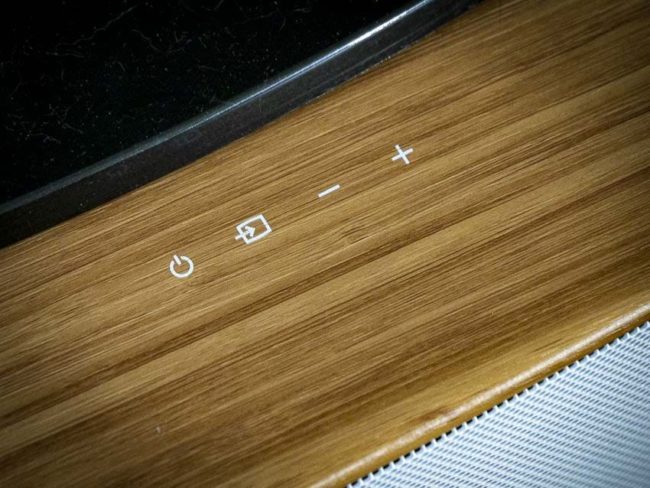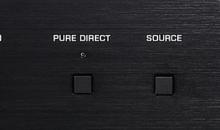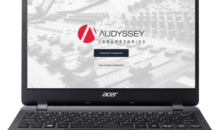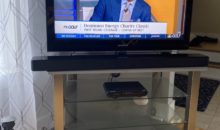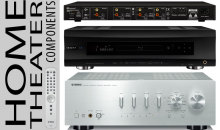Fluance AB40 High-Performance Soundbase Review
Fluance AB40 Ditches the Subwoofer, Still Drops That Bass
TV speakers, as a general rule, are kind of lackluster, and I’ve been relying on mine for years. Every dramatic, suspenseful moment, every epic special effect, every dulcet vocal tone is made less intense by the tinny, undersized speakers of my Samsung television. TV speakers also excel at muddling up the mix. Inarticulate ambient noise and music overwhelm sound effects and dialogue. In the end, the noise coming from my TV speakers sounds more like “audio soup” than something some audio engineer spent his time and energy trying to balance and sweeten. So, when I got the opportunity to give the Fluance AB40 High-Performance Soundbase a shot, I jumped at it if only to remind myself that audio coming from my television didn’t need to sound like an indiscriminate wall of noise.
Pros
- Great sound quality; bass presence without a dedicated subwoofer
- Bluetooth capable
- Sturdy and stable; can hold up to 150 lbs
- Simple set-up
- One of the best sounding speaker systems I’ve heard in the $250 price range
Cons
- No digital readout or display for volume or mode selection
- Lack of HDMI input might be off-putting for some people
- Will work well with TVs on center stands, but perhaps not so well on TVs with feet
Recommendation
Considering the quality of the sound coming out of this Soundbase, the Fluance AB40 seems like a great value at this price. You have to go into this speaker with the understanding that it isn’t, and won’t be, part of a multispeaker setup. But, if simplicity, aesthetics, and killer performance top your list of “must haves” for a soundbar or soundbase, you probably can’t do any better at this price.
Set Up & Remote
Setting up the Fluance AB40 Soundbase is a snap, due in large part to the streamlined (read: minimal) options you have for audio input. Basically, you have a port for the power cord, a 3.5mm aux input, and digital optical input.
Some folks will likely miss the HDMI input, which is an admittedly strange omission from Fluance. But, for a single speaker that isn’t intended to be paired with surrounds and a subwoofer, maybe omitting the HDMI isn’t such a big deal. The AB40 Soundbase comes with a TOSlink optical cable as well, so you won’t have to go buy one.
The AB40 supports Bluetooth, and it uses the aptX codec. Setting up Bluetooth pairing was super simple, and took all of about 4 seconds. You can even pair multiple devices, though it will only auto-connect to the last device it was connected to. The remote has its own shuttle controls that will allow for skipping and reversing tracks, as well as play/pause.
Switching source channels is also a simple affair, especially considering there are only three of them. You can either select your channel – Optical In, Aux In, or Bluetooth – directly from the touch controls on the base or on the remote. An LED in the front of the soundbase lets you know which channel you’re on. White means you’re on the Optical channel, green means you’re set to the Aux channel, and blue means that you’re set to the Bluetooth input.
The Break-in Period
Fluance recommends that you break in the speakers for at least ten hours before really going hard with the volume. They have very good reasons for why it’s a smart thing to do, and they give a lot of information about the speaker mechanics that you can read about here if you have any interest. The bottom line is that we’re going to do it simply because they recommend it. Speaker break-in is real. The only question is whether you’ll actually hear an audible difference with all other factors considered.
To break in your Fluance AB40 High-Performance Soundbase, you’ll want to set aside 10 hours of “burn-in” time, where you’ll play any bass-heavy music (or any of these specialized burn-in signals) at a constant volume. It needs to be at least loud enough that you can see the cones of the speaker actually moving back and forth. This allows the flexible components of the speaker to acclimate themselves to the shape and structure of the voice coil, which moves the diaphragm back and forth and produces sound.
If you’re not keen on spending 10 straight hours blasting dubstep tracks, no worries. Your speakers will eventually break in so long as you’re meeting the volume and frequency requirements. I spent my break-in period playing 90’s hip hop and God of War on the PlayStation.
Sound Blaster
After the break-in period, I figured I’d really test out the Fluance AB40 with a 3-hour jaunt through The Thin Red Line. For those unfamiliar, it’s a film about the battle for the Guadalcanal during World War II. It might be one of the finest war movies ever made. And, from an audio perspective, the sound design is fantastic. It really runs the gamut between subtle and powerful. The calming sounds of nature are contrasted with the carnage that comes from artillery mortars, machine guns, and the sounds of men dying in battle.
Bass Response
I went into this viewing thinking that Fluance’s claim that this soundbase can articulately project 30Hz might be a bit overstated. I definitely didn’t think that I’d be able to crank the volume up and get the feeling of being immersed in the film. However, during some of the more intense moments, I could actually feel the bass moving through me.
I’ll put it this way: my cat couldn’t care less about loud music or general television sounds, but is terrified of fireworks, thunder, and gunshots. I suspect it has something to do with sonic vibrations making him nervous more than the actual volume of the sounds themselves. Well, as things started ramping up in the film, he dropped into stealth mode and skulked off into a corner to wait out the gunfights.
This seems pretty impressive considering the AB40 doesn’t include a separate subwoofer to project these sounds. For the most part, the deeper, bassier parts of the soundtrack rumbled out smooth and clear. I did notice a few instances where the sound broke up in some of the lowest registers, but all things told, I’m pretty impressed with the bass response here.
General Audio Quality and 3D Virtual Surround Sound
Just as importantly, the middle and higher frequencies ring out clearly. With other soundbars, I’ve not gotten the same level of articulation between sounds as I have with the AB40. One of the claims to fame here is the 90W amplifier running dual 1″ tweeters and four 3″ aluminum drivers. Fluance claims that this results in cleaner-sounding dialogue at any volume level. I’d be inclined to agree that dialogue is crisp and clear, and even more subtle sounds are projected in detail.
This could also have something to do with the cabinet itself. Rather than using plastic in the construction, Fluance opts for using an acoustically-tuned wood cabinet. This not only allows for some natural resonance from the wood, but their design also allows for proper air flow for the drivers to operate at a higher level. Plus, the natural woodgrain look appears classy.
Fluance also attributes the clarity of the AB40’s sound to their speaker placement. Rather than a flat panel of drivers, the AB40 has two drivers placed at 35° angles for a wide projection that fills the room. This also aids in the Virtual 3D Surround Sound, which uses a proprietary sound processing technology to widen the soundstage and mimic a surround sound speaker set up. I’m not sure I’m totally convinced about the immersive qualities of virtual surround sound in general, but the audio does sound richer and fuller with the 3D setting turned on.
Gripes with the AB40
Most of my complaints about the Fluance High-Performance Soundbase are ultimately pretty minor, but they’re probably worth mentioning. The biggest annoyance is a lack of any sort of digital readout on the unit. That means that you can really only trust your ears to know where you’re currently at with the volume setting. Obviously, this isn’t the end of the world, but it’s a little more aggravating when it comes to knowing if the bass boost or the Virtual 3D surround sound modes are on or off. After all, you’re not always listening to bass-heavy soundtracks or special effects, but you’d like the mode turned on for when the action happens. Well, you just kind of have to guess sometimes.
The touch controls have been placed far enough back on the base that they could interfere with your television placement. It hasn’t been a problem for my 48″ Samsung, but folks with larger televisions might wish the controls were a bit more forward.
Also, folks that have televisions with feet, as opposed to center stands, might find out that the sound base is not terribly accommodating. This problem has less to do with Fluance’s design and more to do with the general design of a soundbase. A soundbar is probably more appropriate a design for larger TVs that sit on feet rather than a stand. At any rate, just know what you’re getting into with dimensions. This soundbase sits 26″ wide by 14.3″ deep. It also sits at 3.9″ high.
Pricing
The Fluance AB40 High-Performance Soundbase retails for $249. It comes with a 2-year warranty as well. Considering the quality of the sound, the Fluance AB40 seems like a great value at this price. You have to go into this speaker with the understanding that it isn’t, and won’t be, part of a multispeaker setup. But, if simplicity, aesthetics, and killer performance top your list of “must haves” for a soundbar or soundbase, you probably can’t do any better at this price.
Fluance High-Performance Soundbase Specs
- Model Number: AB40
- Speaker Configuration: 2 Way 6 Driver TV Soundbase with Integrated Amplifier
- Tweeter: Dual 1″ Silk Soft Dome, Ferro Fluid Cooled
- Woofer: Four 3″ Aluminum Cone with Butyl Rubber Surround
- Frequency Response: 30Hz – 20KHz (DSP Virtual Sound)
- Amplifier Power: Class D, 90 Watts
- Input: Digital Toslink Optical/3.55mm Stereo AUX
- Subwoofer Output: No
- Bluetooth: Yes; aptX Codec
- Virtual Surround Sound (3D): Yes
- Bass Boost: Yes
- Power Input: 100-240VAC, 50/60Hz 2A
- Power Output: 19VDC/3.15A
- Max Weight Allowance: 150 Lbs
- Enclosure: Tuned Side Port Bass Reflex Design
- Dimensions: 3.9″ x 26″ x 14″
- Speaker Weight: 24 lbs
- Warranty: 2-Year Warranty
- MSRP: $249


